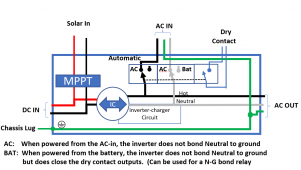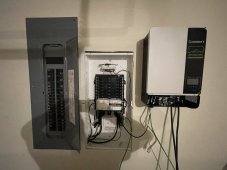NHRenewables
New Member
- Joined
- Sep 16, 2021
- Messages
- 30
I just installed my first Growatt and found that it did have a floating neutral without a ground reference when running on battery. When on UTL mode, voltage on the neutral is zero because it’s bonded to your main panel.
The dry contactor the Growatt has needs to be used to energize a neutral bonding relay to main panel ground when running from battery. In the event of a short, there is no earth bonding and you may end up being the grounding rod!
This topic should be addressed in length by DIY’s on YouTube for safety’s sake. Growatt should provide better guidance on installations in respective regions around the globe. Resellers should be selling these inverters with this guidance and probably include a relay as part of the purchase.
The dry contactor the Growatt has needs to be used to energize a neutral bonding relay to main panel ground when running from battery. In the event of a short, there is no earth bonding and you may end up being the grounding rod!
This topic should be addressed in length by DIY’s on YouTube for safety’s sake. Growatt should provide better guidance on installations in respective regions around the globe. Resellers should be selling these inverters with this guidance and probably include a relay as part of the purchase.




